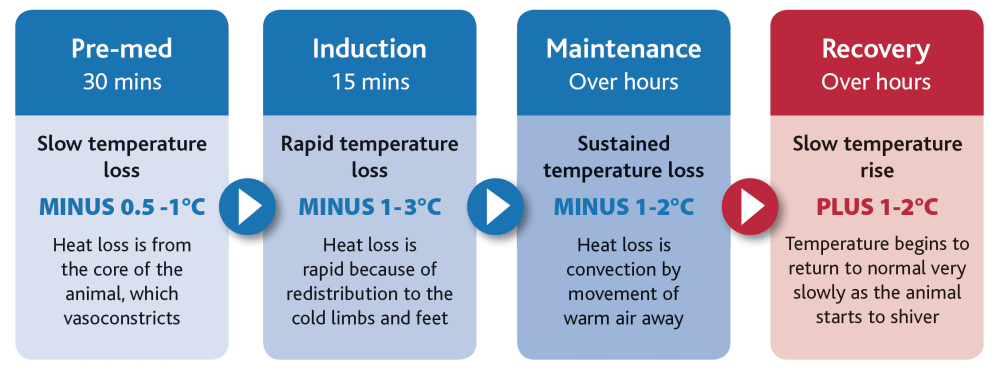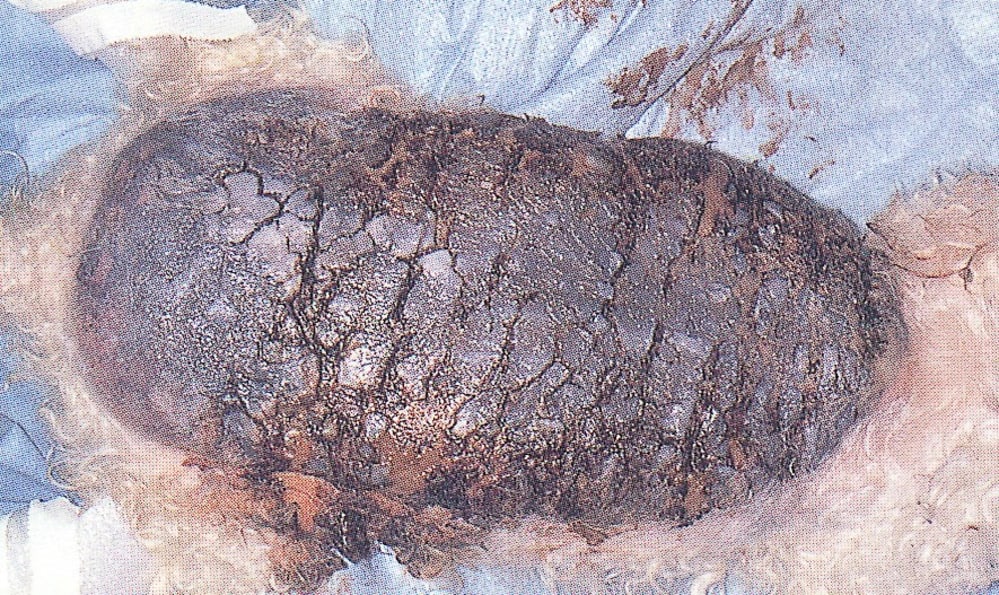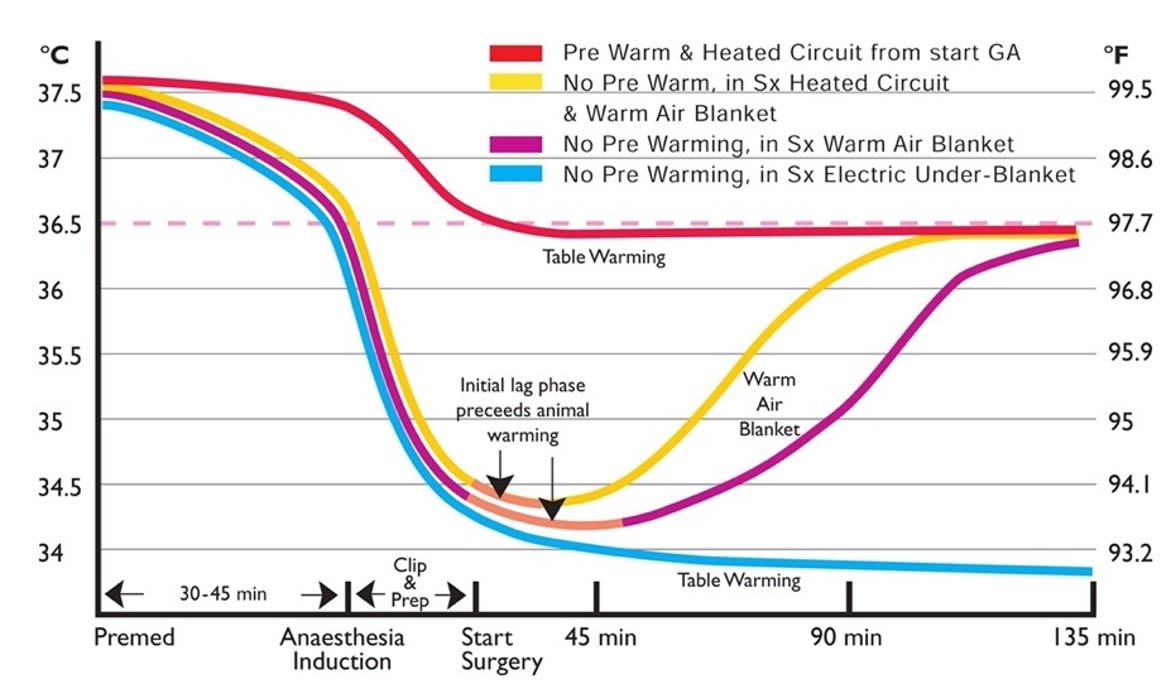
Hypothermia during anaesthesia
Peri-anaesthetic Hypothermia (body temperature <360C) occurs in up to 80% of anaesthetised cats and dogs. This can be due to their small body size, altered peripheral perfusion from premedication & anaesthetic drugs, intubation by-passing the nose, inhaling cold gases, and heat loss from skin surface or open body cavities.
Heat loss is exponential. Premedication causes mild hypothermia with dogs and cats typically losing up to 10C over 30 to 60 minutes before anaesthesia induction. This initial drop in core body temperature precedes the precipitous, critical heat loss of up to 40C that occurs in the first 15 to 30 minutes after induction during clip & prep time. Once animals are draped for surgery, heat loss slows.
Stages of Development of Hypothermia During Anaesthesia
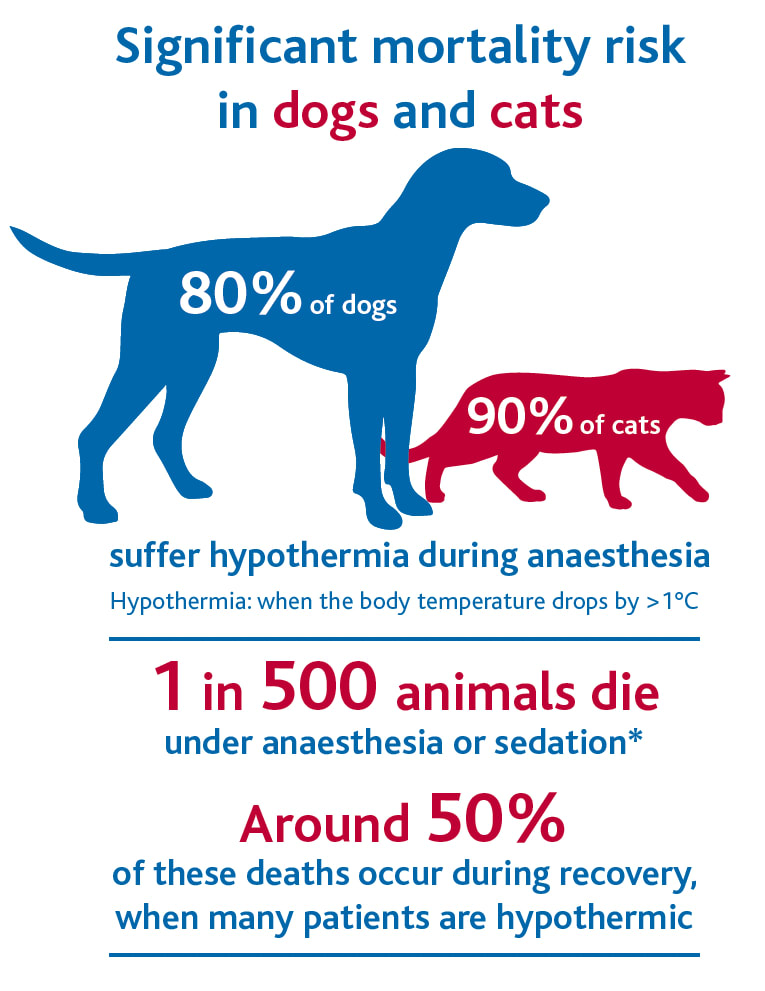
Physiological consequences
Small animal patients that experience peri-anaesthetic hypothermia suffer various physiological impairments:
- Slow heart rate and respiratory depression
- Slow metabolism of drugs, which lengthens recovery
- Pain at surgical site due to shivering
- Systemic pain - vasoconstriction reduces the distribution of analgesic drugs
- Airway obstruction in semiconscious patients
- Risk of burns with many warming devices
As well as these physiological problems there is a risk of mortality in small animals, which is far higher than seen in human anaesthetic practice. Approximately 1 in 500 animals die under anaesthesia or sedation; around 50% of these occur during recovery, when many patients are hyperthermic.
*Study of 98,036 dogs and 79,178 cats in 117 UK veterinary practices during a 2-year study period Brodbelt DC et al. Veterinary Anaesthesia and Analgesia 2008; 35: 365-373.
Management of peri-anaesthetic hypothermia
Various methods are deployed in veterinary clinics to address this problem.
Warming intravenous fluids has long been used but is generally ineffective. The amount of fluid that can be administered during an anaesthetic and the calories that fluid can carry make this method inefficient.
Electrical body warming systems are used in veterinary medicine. They have the potential to burn patients. This can be a catastrophic situation as shown in the illustration below. These devices are particularly hazardous in anaesthetised animals or where patients cannot move away from the heat source.
Thermal burn in a dog placed on a heating device for one hour.
Forced warm air heating systems are used in human and veterinary medicine. In our patients the systems can be used in the three phases of anaesthesia:
- Pre-warming after pre-medication has been administered, whilst the patient is in its cage
- During induction, preparation and surgery itself
- During anaesthetic recovery
An additional method of warming patients is via heated anaesthesia breathing circuits. A recent study in 7 kg Rhesus macaques demonstrated that using heated breathing circuits alongside warm air blankets significantly enhanced recovery from hypothermia compared with heated blankets alone**. Clinical experience in veterinary patients reflects this finding and is a valuable addition to any inhalation anaesthetic protocol.
Pre-warming small animals is highly beneficial and can easily be achieved by placing the pre-medicated patient in a warmed cage. Cage heating devices not specifically designed for sedated or anaesthetised animals such as jugs of warm water or heated wheat bags can cause burns. The margin of safety for causing significant thermal injury is surprisingly narrow. Forced warm air blanket systems are ideal for use in pre-warming cages because they deliver a large flow of warm air at constant, thermostatically controlled temperatures.
During induction, clip and prep there can be significant heat loss in part due to the vasodilation of the patient following pre-medication. Use of a warming blanket along with heated tubing as soon as the patient is intubated can limit heat loss prior to the commencement of surgery. Leaving the animal on a warming blanket once it is fully draped should ensure that further heat loss is minimised.
Once the animal is in recovery getting it extubated is a priority. The time to extubation can be extended by hypothermia. This period occupies valuable time of the veterinary team members with the accompanying cost. Making sure that the patient continues to be warmed using a heated over blanket should optimise recovery time.
**Journal of the American Association for Laboratory Animal Science 2021Vol 60, No 6 November 2021 Pages 1–6
Equipment
Cloth warm air blankets are available, which are can be washed and reused; this may appear to reduce the cost. Cloth blankets lose much of their effectiveness once they have been washed and dried.
Specially engineered blankets such as Darvall’s Cozy Warm Air Blankets are made of porous material on the contact surface and are widely used. These can be reused in some circumstances such as anaesthetic pre-warming and recovery if they are unsoiled. However a new blanket is recommended for use in the operating theatre.
Decision making
Let us consider how we decide what systems to use based on our “balance scorecard”.
Patient safety and the effectiveness of the equipment in maintaining core body temperature are clearly most important. There is little doubt based on available evidence that the combination of heated anaesthetic tubing and specifically engineered warming blankets provide the best solutions when deployed as described. It seems common sense that we should not compromise on these aspects of clinical care. However some people take the view that these blankets, which are not made of a recyclable material, are less cost-effective and potentially more environmentally damaging than washable cotton blankets. However this does not take into account the environmental and monetary costs involved in washing cotton blankets effectively - electricity, hot water, detergent, drying, employee time etc.
Products
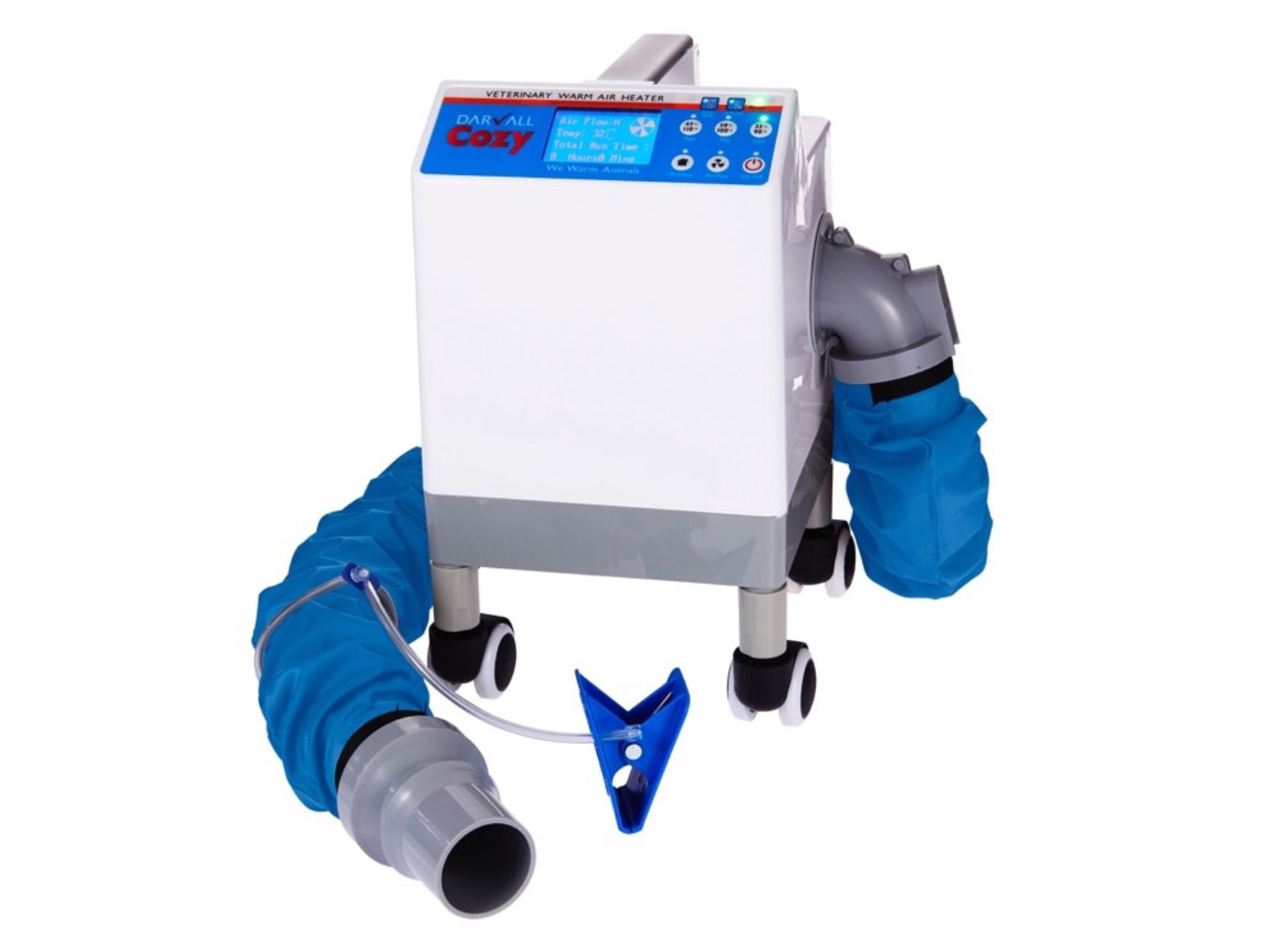
Darvall Cozy Warm Air Heater
The redesigned Cozy Warm Air Heater has a built-in HEPA filter, ensuring that the warm air is cleaner than the air in the kennels or operating theatre. The filter should be replaced by the end user after 500 hours use.
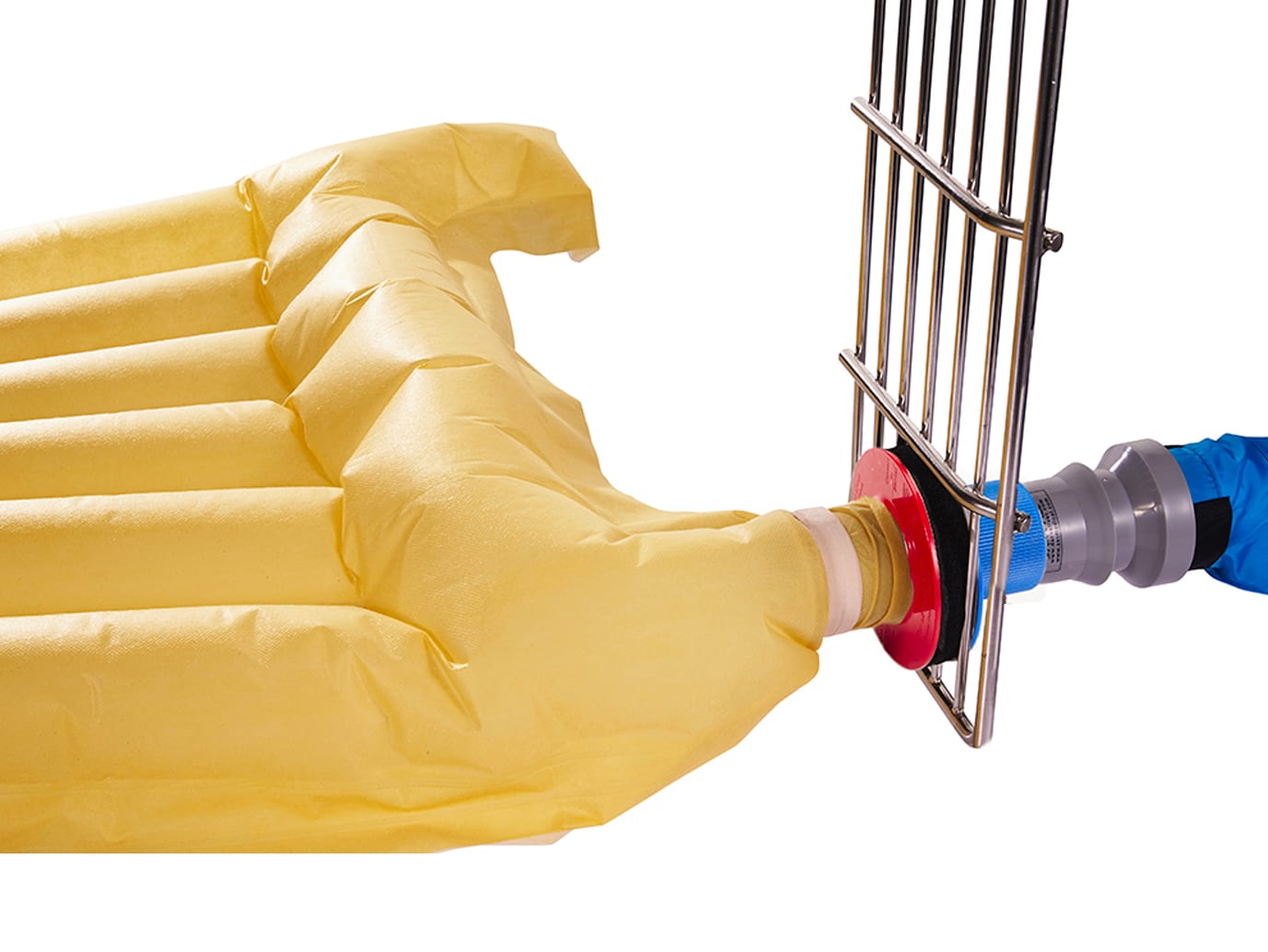
Cozy Warm Air Blankets
The Darvall Cozy Warm Air Blankets safely and effectively warms premedicated animals, delivering warm air at constant, thermostatically controlled temperatures without risk of burning.
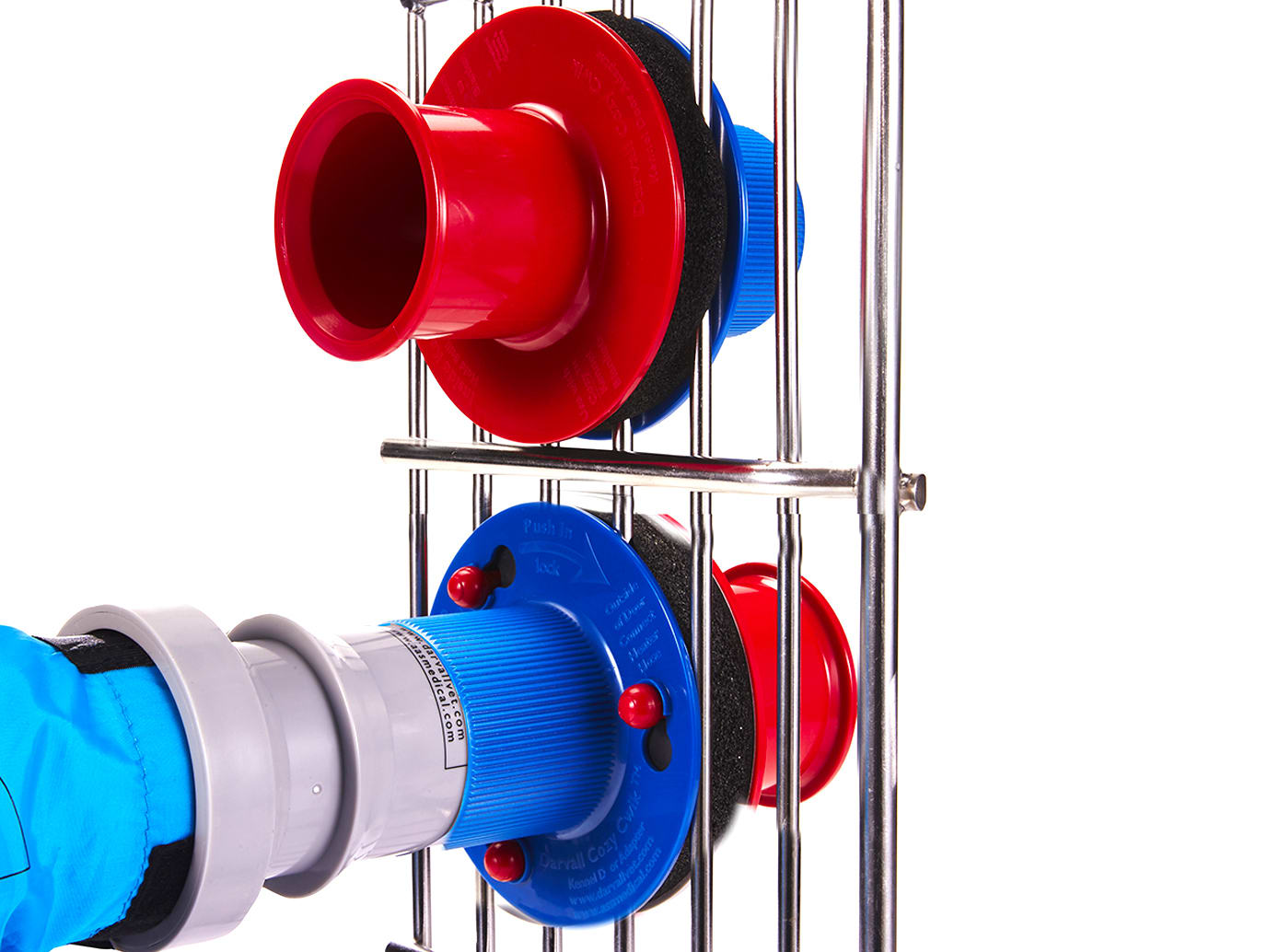
Darvall Cozy Kennel Door Adapter
The Darvall Cozy Kennel Door Adapter allows simple connection of the blanket and warmer without placing the hose in an open kennel door. The simple ‘Cozy Cwik’ mechanism avoids the risk of losing wing nuts.
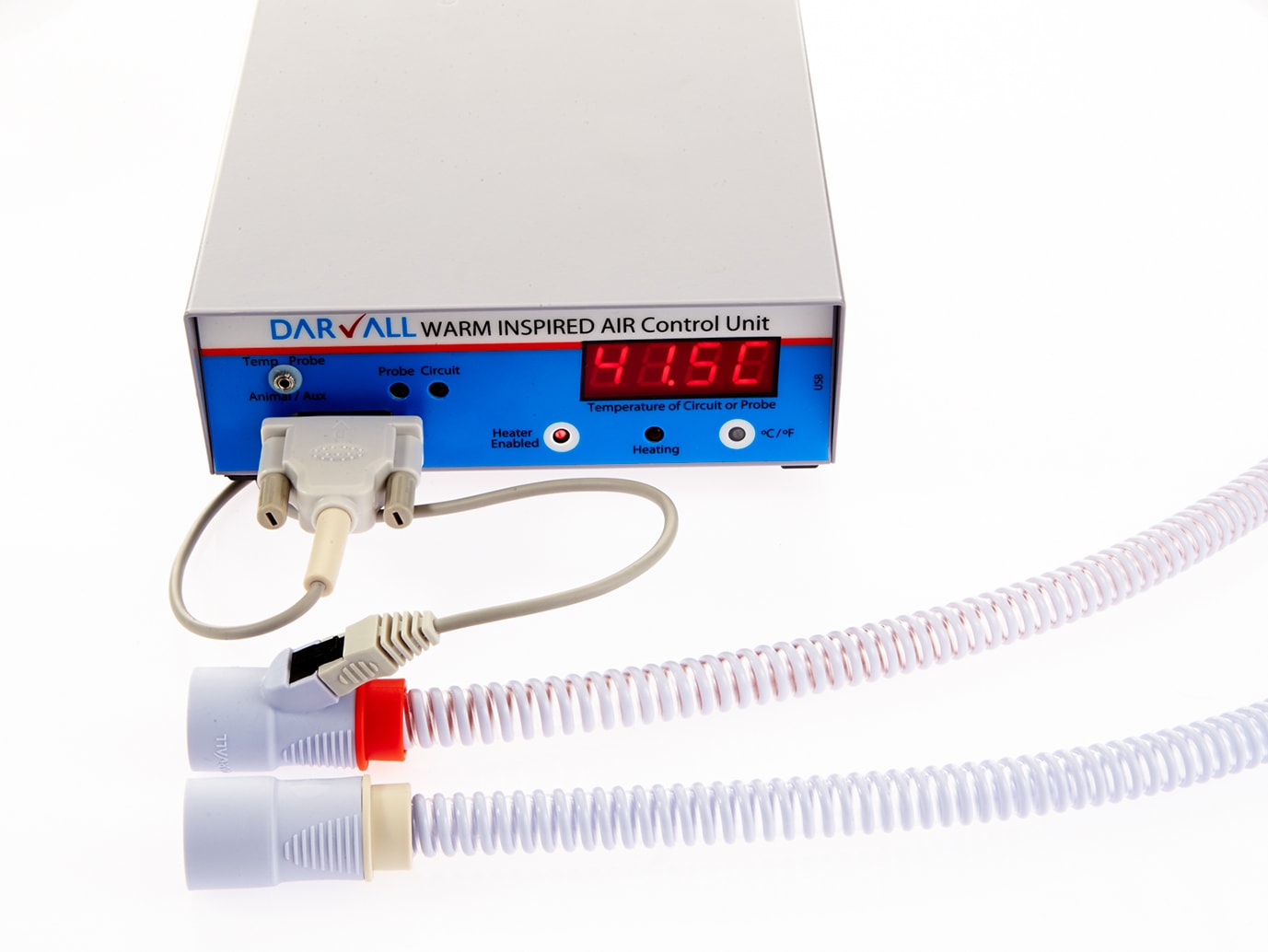
Darvall Cozy Heated Breathing Circuits
Darvall Cozy Heated Smooth-Wall Circuits reduce critical heat loss with warm air inhalation from the first breath. Recent research shows that dogs and cats typically lose 10°C core body temperature before anaesthesia commences.
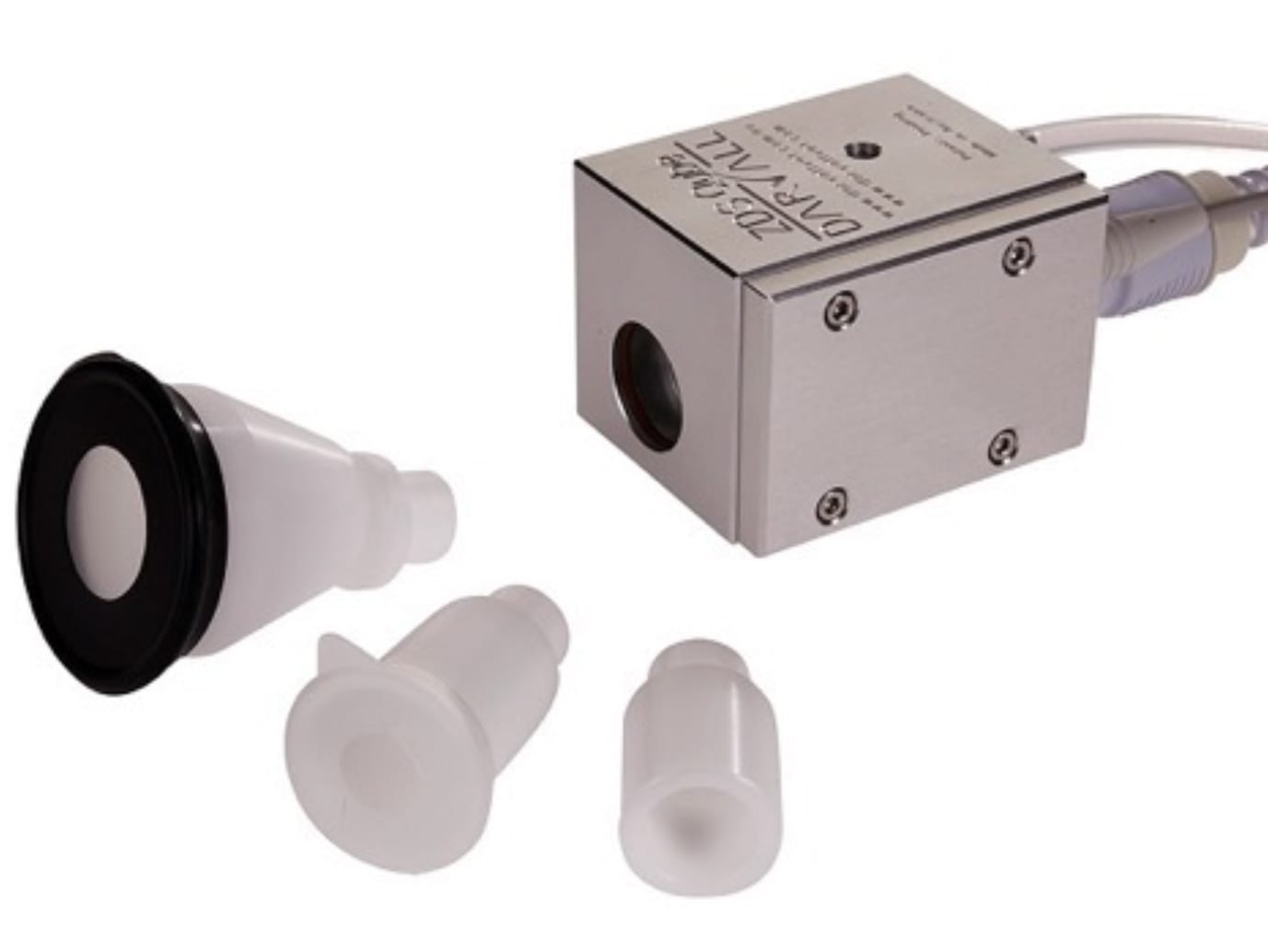
ZDS (Zero Dead Space) Qube and Face Masks
ZDS (Zero Dead Space) Qube and Face Masks system is designed for animals smaller than 2kg; it can be used on animals as small as a neonatal mouse.
Product list
| AAS Part Number | Description | Contents |
|---|---|---|
| 9084 | Darvall Cozy Warm Air Blanket System
Complete Starter Kit 3 for Anaesthesia & Kennel Warming |
Darvall’s Peri-Anesthesia system for Kennel Warming animals -includes: Cozy Heater (AAS PN9709) Cozy Accessories Kit (AAS PN9758) Cozy Cwik KDA (Kennel Door Adapter) Kit (AAS PN 9842) Sample Pack of 8 Warm Air Blankets (AAS PN 9775) |
| 8460 | Darvall Cozy Blanket
10 in Sample Box |
Cozy Blanket Sample Box 10 blankets: 2x UB CSD, 2x UB MLD, 2x RB CSD, 2x RB MLD, 1x OBDB MLD, 1xEB VSA |
| 5310 | Darvall Cozy VETOB-DB MLD
Pack 10 |
Warm Air Over-Blanket for use in Anaesthesia, Recovery and ICU/Under-blanket for Dentistry in Medium to Large Dogs
0.9m long x 0.7m wide, single inlet connection |
| 5360 | Darvall Cozy VETRB CSD
Pack 10 |
Warm Air Over-Blanket for Recovery and ICU care for Cats and Small Dogs in kennels
0.6m long x 0.6m wide, needs to be used with Darvall Kennel Door Adapter (AAS PN 5366), 2 x inlet connections |
| 5359 | Darvall Cozy VETRB MLD
Pack 10 |
Warm Air Over-Blanket for Recovery and ICU Care for Medium to Large Dogs in kennels
1.0m long x 0.6m wide, needs to be used with Darvall Kennel Door Adapter (AAS PN 5366), 2 x inlet connections |
| 2979 | Darvall Cozy VETUB CSD
Pack 10 |
Warm Air Under-Blanket for use in Anaesthesia and Surgery in cats and small dogs
0.95m long x 0.5m wide, 80mm diameter inflation tube with 2 x inlet connections |
| 2275 | Darvall Cozy VETUB MLD
Pack 10 |
Warm Air Under-Blanket for use in Anaesthesia and Surgery in medium to large dogs
1.2m long x 0.65m wide, 120mm diameter inflation tube with 2 x inlet connections |
| 2827 | Darvall Cozy VETEB VSA
Pack 10 |
Darvall Warm Air Over-Blanket for Recovery and ICU Care in Anaesthetised and Caged Exotics
0.6m long x 0.3m wide, 1x inlet connection |
| 9842 | Cozy Cwik KDA (Kennel Door Adapter) Kit | KDA Kit: Cozy Cwick KDA with no moving parts ducts warm air into Recovery/ICU Kennels Includes:
8-blanket sample pack Universal Heater Hose adapter Cozy KDA Extension Hose 25cm |
| 9855 | Starter Kit 1 - Heated Anaesthesia Breathing Circuits & Darvall Warm Air Control Unit | Heated Anaesthesia Breathing Circuits and Heat Controller
Connecting cables 3.6mm animal temp. probe 2 sets Heated Smooth Wall Circuits:12mmID &16mmID Lack Adapter |
| 8556 | Starter Kit 2 (Exotics): Heated ZDS Qube for Exotics & Darvall Warm Air Control Unit | ZDS Qube EXOTICS: Heat Controller
Connecting cables 3.6mmOD animal temp. cable Heated Qube block with connecting cable 2.5mmOD exotics temp. cable Exotics mask kit (PN 8406) |
| 8440 | Starter Kit 2 (Rodents): Heated ZDS Qube for Rodents & Darvall Warm Air Control Unit | ZDS Qube RODENTS Heat Controller
Connecting cables 3.6mmOD animal temp. cable Heated Qube block with connecting cable 2.5mmOD rodent temp. cable Rodent mask kit (PN 8406) |
Cookie policy

